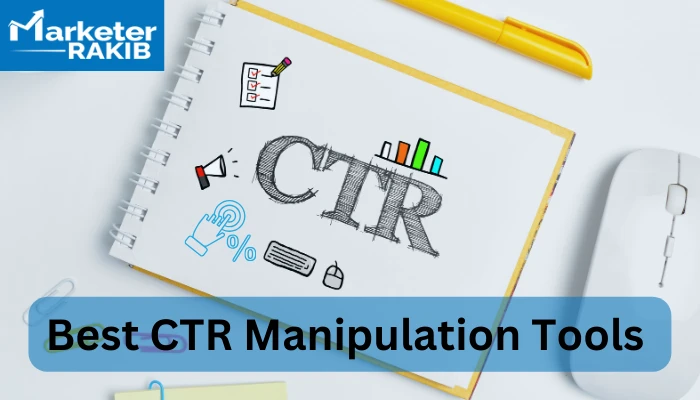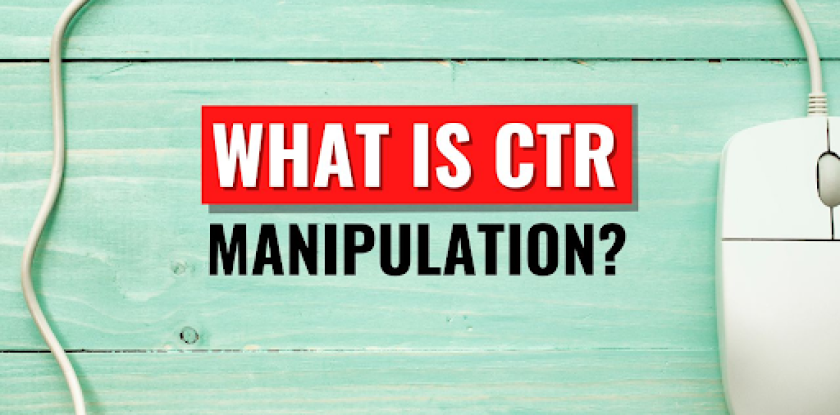Increase Your Click-Through Rates with Reliable CTR Manipulation Approaches
Increase Your Click-Through Rates with Reliable CTR Manipulation Approaches
Blog Article
Exactly How to Measure the Influence of CTR Adjustment on Your Marketing
Recognizing the nuances of click-through rate (CTR) adjustment in marketing is important for services pursuing authentic user involvement. By checking out essential metrics such as conversion rates and bounce rates, marketers can discover potential discrepancies that may occur from synthetic improvements. Utilizing devices like Google Analytics and applying A/B testing can offer insights into the efficiency of various approaches. The implications prolong beyond prompt data; the lasting results on brand stability and user trust fund warrant mindful factor to consider. What remains to be discovered is how these components interconnect and influence overall advertising success.
Recognizing CTR Control
Recognizing CTR manipulation is necessary for marketing professionals looking for to enhance their campaigns and guarantee data stability. Click-through price (CTR) refers to the ratio of customers who click on a particular web link to the complete number of individuals that check out the advertisement or content.
The effects of CTR adjustment extend past plain data distortion; they can weaken trust fund in electronic advertising and marketing. When services count on filled with air metrics, they may purchase inefficient projects, eventually harming their roi. Additionally, platforms may punish advertisers involving in such techniques, leading to additional ramifications for their advertising and marketing efforts.
To effectively combat CTR adjustment, marketing experts need to create a detailed understanding of their information sources and analytics devices. By utilizing advanced monitoring methods and scrutinizing traffic resources, they can determine irregular patterns and make sure that their performance metrics reflect real individual interaction - CTR Manipulation. This watchfulness is critical for fostering long-term success in a significantly affordable electronic landscape
Secret Metrics to Evaluate
Effective analysis of essential metrics is critical for examining truth performance of advertising projects and detecting prospective CTR control. One main statistics to think about is the Click-Through Rate (CTR) itself, which stands for the ratio of individuals who click an advertisement to the complete number of individuals who watch it. An unexpected spike in CTR might show control, necessitating additional investigation.
Furthermore, keeping an eye on conversion prices is important. A high CTR with a reduced conversion price might signal that the clicks are not real or that the targeting is misaligned (LinkDaddy CTR Manipulation). Assessing bounce rates can provide insight into customer engagement; a high bounce price after a click may suggest that the web traffic is not quality-driven.

Tools for Measurement

Additionally, A/B screening tools such as Optimizely or VWO can assist in experimentation with different ad variations to identify which aspects drive greater CTR. These tools enable marketers to assess real-time efficiency and make data-driven changes. Social media analytics devices, like Hootsuite or Sprout Social, can additionally be critical in recognizing CTR within social systems, providing understandings right into target market habits and involvement trends.
In addition, heat mapping tools, such as Hotjar, can expose just how customers engage with ads, helping to determine where enhancements can be made. Combining these devices develops a robust measurement framework, making it possible for online marketers to discern the results of CTR control efficiently. Ultimately, the right choice of dimension tools is critical for making informed advertising and marketing choices and optimizing campaign performance.

Assessing Long-term Results
One must consider the long-lasting impacts of CTR control on general advertising efficiency, as temporary gains can usually mask much deeper effects. In time, synthetically inflated click-through rates may lead to decreased count on from consumers and search engines alike. When users repeatedly experience misleading techniques, they may end up being reluctant to involve with the brand, leading to lower conversion prices in the future.
Furthermore, algorithm updates from platforms such as Google are developed to prioritize real interaction over filled with air metrics. Services that count on CTR manipulation may find themselves penalized, leading to a decline in organic reach and presence. This can have a cascading effect on brand name trustworthiness and customer commitment, ultimately threatening the extremely objectives that the initial control sought to attain.
In addition, the information gathered from controlled CTR might misguide marketing experts in their method advancement. Depending on manipulated data can lead to misdirected projects that stop working to resonate with the target audience, bring about thrown away sources and missed chances. It is critical for marketing experts to assess the long-term ramifications of CTR control and focus on lasting, moral engagement methods for lasting success.
Moral Factors To Consider in CTR Manipulation
In the world of digital advertising and marketing, moral considerations bordering CTR control are critical. While the need to enhance click-through prices (CTR) can lead to short-term gains, the possible long-term effects on brand honesty and consumer trust fund can not be overlooked. Controling CTR usually includes methods that might mislead customers, such as clickbait headings or deceitful marketing methods. These techniques can result in a transient boost in web traffic however might inevitably erode client confidence.
Additionally, ethical concerns extend to compliance with laws such as the Federal Profession Compensation (FTC) standards, which mandate openness in advertising and marketing. Failing to comply with these criteria can expose organizations to lawful implications and damage their online reputation. Marketers should consider the effects of their approaches on user experience and the more comprehensive sector landscape.
In addition, the surge of expert system and automation in marketing presents more ethical predicaments. The potential for mathematical prejudice or the exploitation of consumer information questions concerning responsibility and fairness. Ultimately, honest advertising and marketing practices need to prioritize openness, honesty, and respect for the customer, fostering lasting connections that transcend plain metrics like CTR. Stabilizing performance with ethics is vital for sustainable success in the electronic marketplace.
Final Thought
In conclusion, determining the effect of CTR adjustment on advertising and marketing needs an extensive evaluation of essential metrics, including click-through prices, conversion rates, and bounce rates. Eventually, a data-driven strategy makes certain that advertising techniques are efficient and lined up with real user communications.
Understanding the nuances of click-through price (CTR) manipulation in CTR Manipulation Press Release marketing is necessary for companies aiming for real customer involvement.Effective evaluation of essential metrics is important for reviewing the real efficiency of marketing campaigns and discovering prospective CTR control.One need to consider the lasting impacts of CTR control on general marketing performance, as short-term gains can typically mask deeper implications.In the realm of electronic advertising and marketing, moral considerations surrounding CTR control are extremely important.In conclusion, measuring the effect of CTR adjustment on advertising calls for a detailed analysis of vital metrics, including click-through rates, conversion rates, and bounce prices.
Report this page